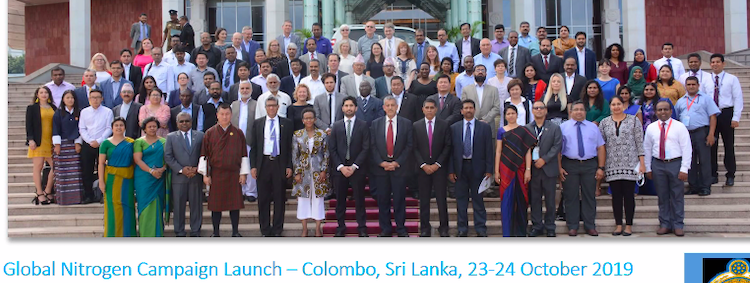South Asian Nitrogen Hub
Everyone knows about climate change and carbon footprints, but how many people are aware that nitrogen pollution is just as significant?
Humans have massively altered flows of nitrogen on our planet, leading to both benefits for food production and multiple threats to the environment. Few places on Earth are more affected than South Asia, where levels of nitrogen pollution are rapidly increasing. The result is a web of interlinked problems, as nitrogen losses from agriculture and from fossil fuel combustion cause air and water pollution. This damages human health, threatens biodiversity of forests and rivers, and leads to coastal and marine pollution that exacerbates the effects of climate change, such as by predisposing reefs to coral bleaching. It is clear that nitrogen pollution is something we should be taking very seriously. You may wonder why we should worry about something happening so far away when we have enough of our own local nitrogen issues. But don’t forget that many of our daily essentials, cotton, animal feed, rice, tea and more are grown for us in South Asia. That makes it our problem.
SANH is a partnership under the UK Global Challenge Research Fund (GCRF) that brings together 32 leading research organisations with project engagement partners from the UK and South Asia.
The hub is focusing on research on how to improve nitrogen management from all sources but particularly in agriculture. Better management can save farmers’ money on fertilizers and make better use of manure, urine and natural nitrogen fixation processes. The project is looking to highlights options for more profitable and cleaner farming for India, Pakistan, Bangladesh, Nepal, Afghanistan, Sri Lanka, Bhutan and the Maldives, providing opportunities for knowledge-sharing and cooperation At the same time, the hub considers how nitrogen pollution could be turned back to fertilizer, for example by capturing nitrogen oxide gas from factories and converting it into nitrate.
Theory of change
SANH aims to ensure long-term impact by engaging and connecting four key sectors: intergovernmental policymakers, villages, civil society and NGOs and business forums.
The research hub is co-designed with key stakeholders to identify research needs and start with the nature of the problem.
The co-design process brings together farmers, civil society and business to inform priority setting and better understand the interplay between farmer concerns, scientific evidence and social, cultural and religious factors.
Pathways to impact and durability are underpinned by Intergovernmental partnerships between SANH and the International Nitrogen Management System recently
established by the UN.

Want to know more?
Follow the @GCRFNitrogenHub on Twitter or contact Keesje Avis (pronounced Kaysha) at keesje@nourishscotland.org.uk